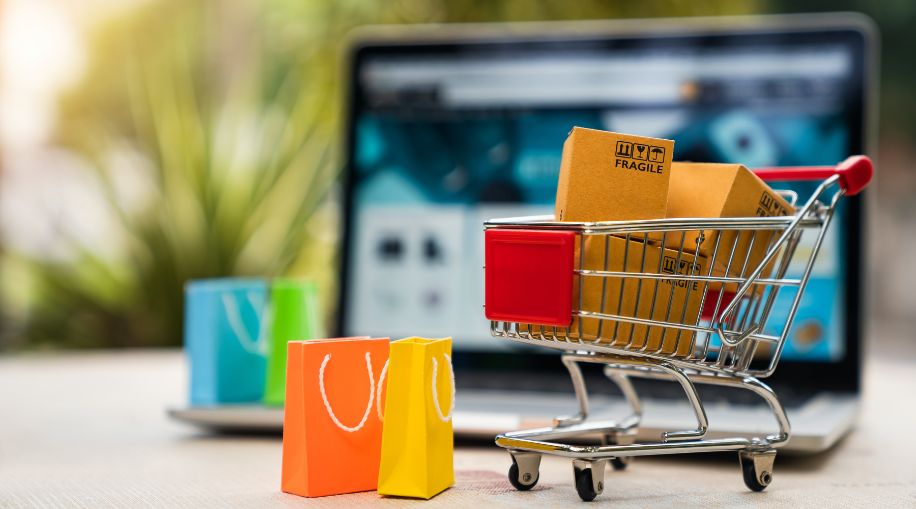Your Essential Guide
If you're looking for information on how to to sell products online in India, you're entering one of the fastest-growing e-commerce markets in the world. Whether you're a small business, an independent artisan or just exploring a side hustle, there are multiple platforms and tools that make it simple to start selling from home. In this guide, we'll walk you through the easiest way to get your products online, with a focus on platforms like Amazon India, Snapdeal, Meesho and Shopify, and marketing tools like Google Ads and Google Shopping.
Use Google Ads & Google Shopping to Boost Sales
Once your products are live, getting people to see them is the next challenge. That’s where Google Ads and Google Shopping come in.
Google Ads
With Google Ads, you can show your products to people exactly when they're searching for them. For example, someone searching for “organic face cream in India” could see your product at the top of the search results.
You can target by:
- Keywords (what people search).
- Location (specific cities or regions).
- Device (mobile vs desktop).
- Language and time.
Google Shopping
Using the Google Merchant Center, you can upload your product catalog to appear in the Google Shopping tab. These listings include product images, prices and store names—making them more visual and appealing.
How to get started:
- Create a Google Merchant Center account.
- Upload your product feed (easy to do through Shopify or even Excel).
- Link it to your Google Ads account and launch a Shopping Campaign.
This is a powerful way to get traffic from high-intent shoppers who are ready to buy.
Related Search Topics (Ads)
Selling Through Marketplaces in India
Marketplaces are the easiest way to get started since they already have millions of active shoppers and take care of many logistics for you.
Here are the top Indian marketplaces:
Amazon India
Amazon India is one of the most trusted platforms in India. You can list products in almost any category, from electronics to handmade crafts. They offer Fulfilment by Amazon (FBA), which handles storage, shipping and even customer service.
Flipkart
This is India’s second-largest e-commerce platform. Flipkart offers seller support, marketing tools and access to a large base of Indian customers. Flipkart also has warehouse and delivery services you can use.
Snapdeal
Snapdeal is ideal for sellers focusing on value-for-money or budget-friendly products. It caters largely to Tier 2 and Tier 3 cities, which are rapidly growing e-commerce markets.
Meesho
Perfect for small businesses and resellers, Meesho makes it easy to sell directly via WhatsApp or Facebook and doesn’t charge commissions, which makes it popular for first-time sellers.
These platforms take care of traffic, payment processing and even delivery (depending on the plan), allowing you to focus on your products and pricing.
Creating Your Own Store with Shopify or Dukaan
If you want more control over branding, customer experience and long-term growth, building your own online store is a great option.
Shopify
Shopify is a global e-commerce platform that works beautifully in India. It lets you build a website, upload your products and start selling with zero coding knowledge. You can connect Indian payment gateways like Razorpay, PayU or Instamojo.
Dukaan
Made in India, Dukaan is a mobile-first platform that allows you to set up a store in minutes. It’s perfect for local sellers, freelancers and small businesses looking for a quick launch.
Zoho Commerce
Another Indian alternative that’s ideal for businesses already using Zoho products. It comes with built-in inventory and marketing tools.
With your own store, you’ll need to bring in customers through marketing—but you get full ownership over customer data and branding.
Combine with Social Media for Best Results
Don’t forget about Instagram, Facebook and WhatsApp. In India, these platforms are huge for product discovery. Use them to:
- Post product photos and videos.
- Run paid ads.
- Respond to customer inquiries.
- Build a community around your brand.
Platforms like Shopify and Dukaan even let you integrate your store with Instagram and Facebook so customers can buy directly from your social pages.
Bonus Tip: Track and Improve
Use tools like:
- Google Analytics (track visitors and purchases).
- Facebook Pixel (track ads and conversions).
- Shopify reports (for store analytics).
Regularly check what’s working, and keep improving your ads, pricing and products.
Keep reading to learn how to protect your brand and your business with trademarks.

